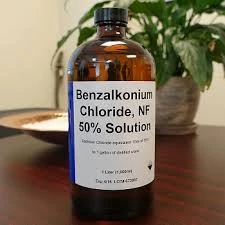pam chemical for water treatment
PAM Chemical for Water Treatment An Overview
Water treatment is a critical process that ensures the safety and availability of clean water for consumption, agriculture, and industrial use. One of the key chemicals utilized in water treatment is Polyacrylamide (PAM). PAM is a synthetic polymer that has gained significant attention due to its effectiveness in various water treatment applications, including flocculation, sedimentation, and sludge dewatering.
What is PAM?
PAM is a water-soluble polymer made from acrylamide subunits. It can be categorized into several types based on its charge properties anionic, cationic, and nonionic. The specific type of PAM used in water treatment depends on the characteristics of the water being treated and the contaminants present. For instance, anionic PAMs are often employed to treat wastewater containing organic pollutants, while cationic PAMs are suitable for treating waters with high levels of suspended solids.
Mechanism of Action
The effectiveness of PAM in water treatment lies in its ability to facilitate the aggregation of suspended particles. When PAM is added to water, its long-chain molecules interact with the suspended particles, neutralizing their charges. This neutralization results in particle agglomeration, allowing them to form larger flocs that can settle more rapidly. The larger flocs created through this process can then be easily removed through sedimentation or filtration, significantly improving the clarity of the water.
Applications in Wastewater Treatment
pam chemical for water treatment

PAM is widely used in various sectors for wastewater management. Its application is especially prominent in industries such as mining, pulp and paper, and municipal wastewater treatment. In mining operations, PAM aids in the removal of fine particles from water, reducing the environmental impact of tailings and promoting water recycling. Similarly, in municipal plants, PAM enhances the efficiency of the sedimentation process, ensuring that treated water meets safety standards for discharge or reuse.
In sludge dewatering, PAM plays a crucial role as a dewatering aid. By promoting the aggregation of sludge particles, PAM helps in reducing the volume of sludge, which not only minimizes disposal costs but also enhances the recovery of water, making the process more sustainable.
Benefits of Using PAM
The advantages of using PAM in water treatment are manifold. Firstly, it leads to improved water quality, effectively reducing turbidity and allowing for clearer water. Secondly, PAM can enhance the efficiency of treatment processes, which can lower operational costs. Its versatility also allows for customization based on specific treatment needs. Additionally, PAM is known for its stability in various environmental conditions, ensuring consistent performance in diverse applications.
However, it is essential to manage PAM usage carefully. The potential environmental impact of acrylamide, a toxic monomer used in PAM production, necessitates that wastewater treated with PAM is monitored for residual chemicals before being discharged back into natural water bodies. As regulatory frameworks evolve, manufacturers and water treatment facilities must adhere to safety guidelines and optimize PAM formulations to minimize any potential risks associated with residual chemicals.
Conclusion
Polyacrylamide has emerged as a vital chemical in the field of water treatment, offering significant advantages in the management of water quality and efficiency. Its application across various industries has demonstrated its effectiveness in flocculation, sedimentation, and sludge dewatering, making it indispensable in modern water treatment processes. As the demand for clean water continues to rise globally, the role of PAM in ensuring safe and sustainable water management is expected to expand, providing solutions to some of the pressing water challenges of our time. By understanding and optimizing its use, industries can contribute to better water conservation and environmental protection, paving the way for a more sustainable future.
-
Water Treatment with Flocculant Water TreatmentNewsJun.12,2025
-
Polymaleic AnhydrideNewsJun.12,2025
-
Polyaspartic AcidNewsJun.12,2025
-
Enhance Industrial Processes with IsothiazolinonesNewsJun.12,2025
-
Enhance Industrial Processes with PBTCA SolutionsNewsJun.12,2025
-
Dodecyldimethylbenzylammonium Chloride SolutionsNewsJun.12,2025





